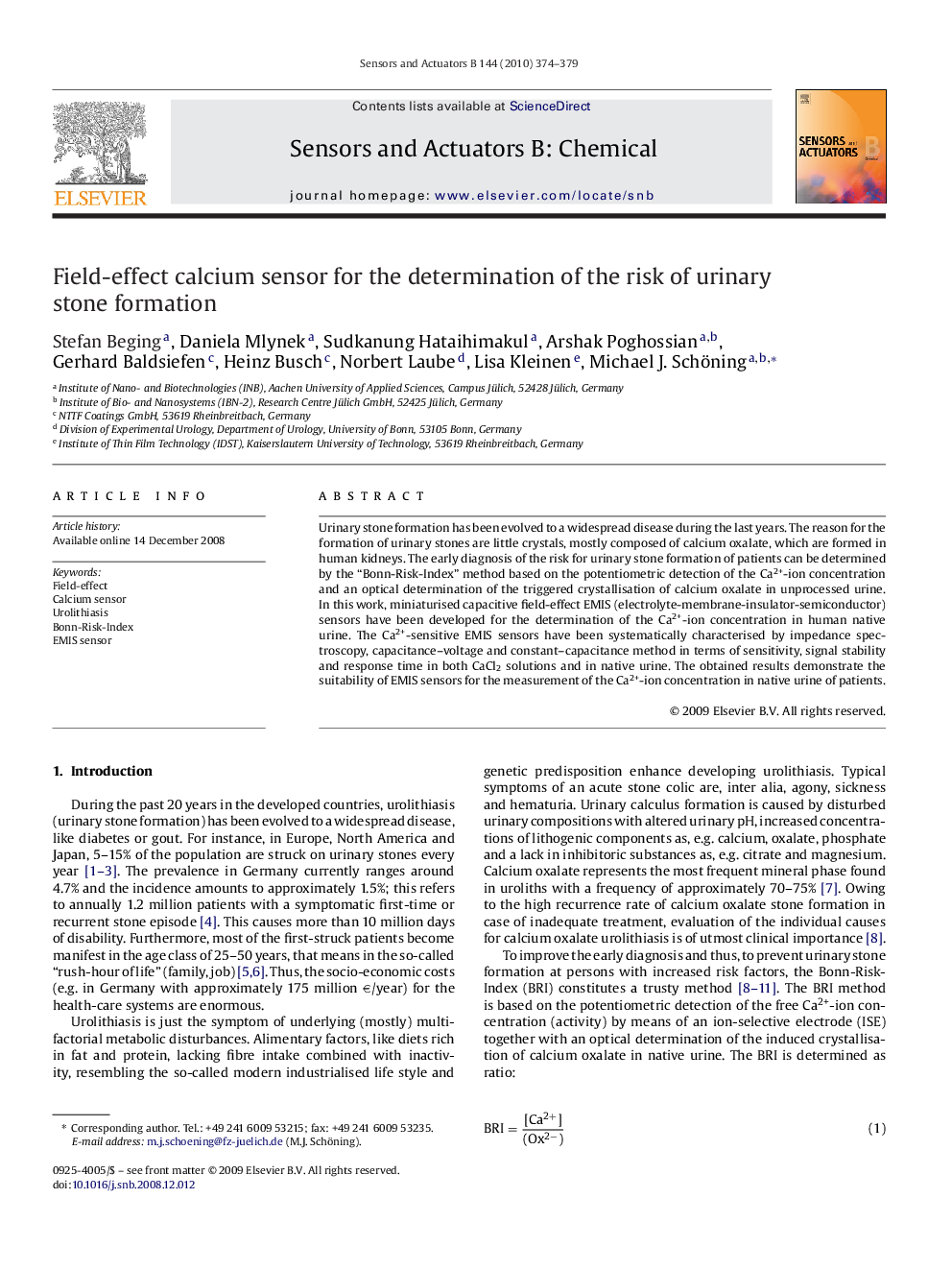| Article ID | Journal | Published Year | Pages | File Type |
|---|---|---|---|---|
| 744921 | Sensors and Actuators B: Chemical | 2010 | 6 Pages |
Abstract
Urinary stone formation has been evolved to a widespread disease during the last years. The reason for the formation of urinary stones are little crystals, mostly composed of calcium oxalate, which are formed in human kidneys. The early diagnosis of the risk for urinary stone formation of patients can be determined by the “Bonn-Risk-Index” method based on the potentiometric detection of the Ca2+-ion concentration and an optical determination of the triggered crystallisation of calcium oxalate in unprocessed urine. In this work, miniaturised capacitive field-effect EMIS (electrolyte-membrane-insulator-semiconductor) sensors have been developed for the determination of the Ca2+-ion concentration in human native urine. The Ca2+-sensitive EMIS sensors have been systematically characterised by impedance spectroscopy, capacitance-voltage and constant-capacitance method in terms of sensitivity, signal stability and response time in both CaCl2 solutions and in native urine. The obtained results demonstrate the suitability of EMIS sensors for the measurement of the Ca2+-ion concentration in native urine of patients.
Related Topics
Physical Sciences and Engineering
Chemistry
Analytical Chemistry
Authors
Stefan Beging, Daniela Mlynek, Sudkanung Hataihimakul, Arshak Poghossian, Gerhard Baldsiefen, Heinz Busch, Norbert Laube, Lisa Kleinen, Michael J. Schöning,
